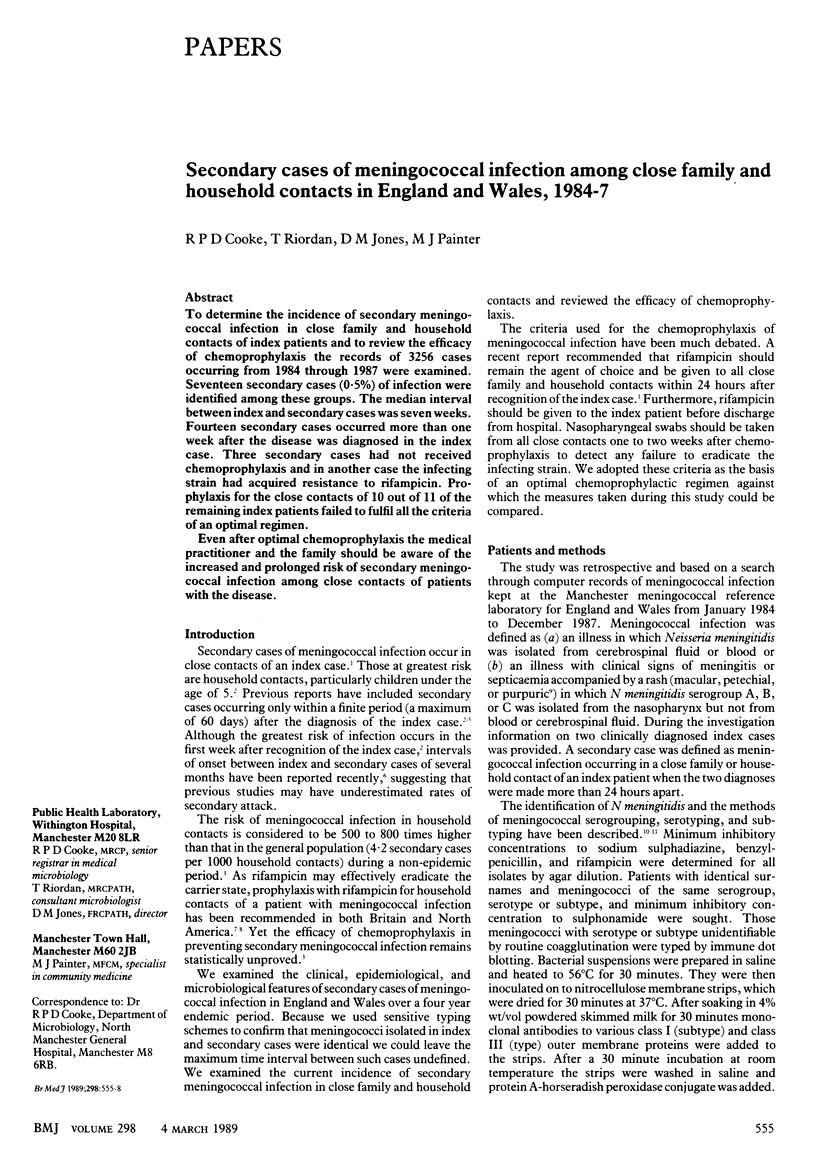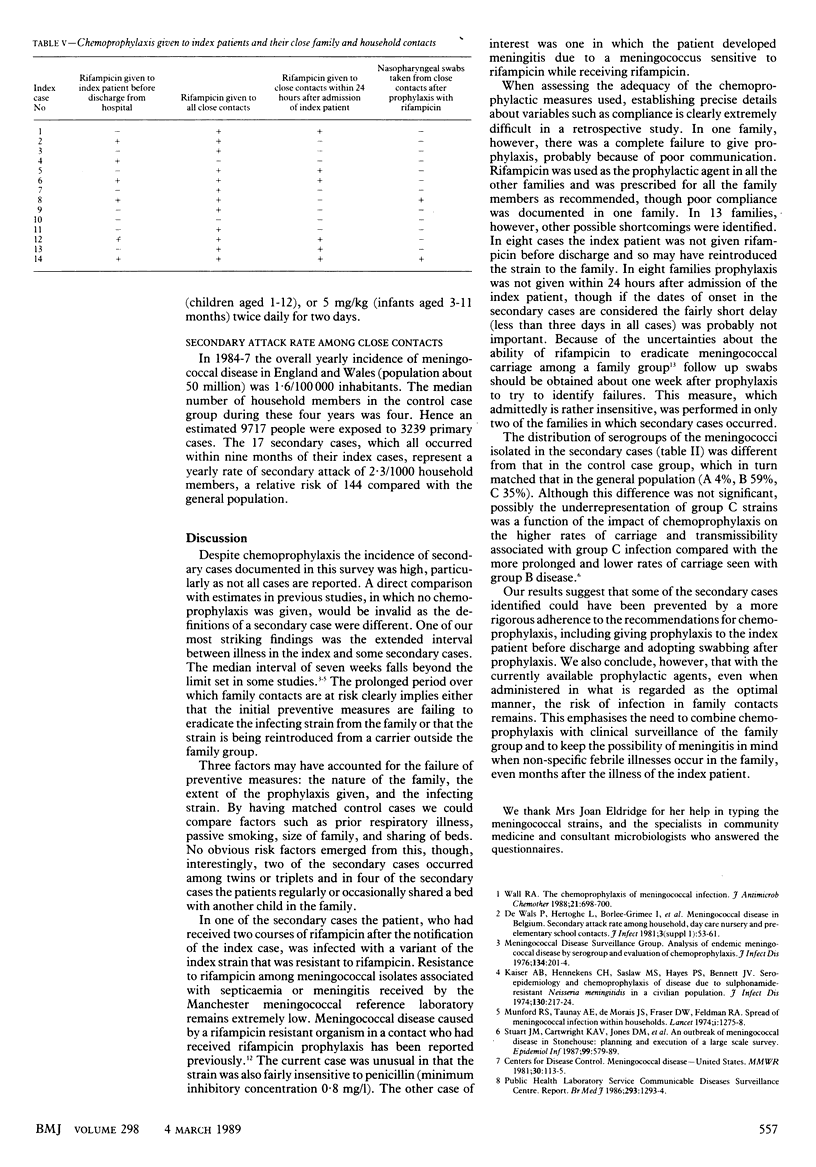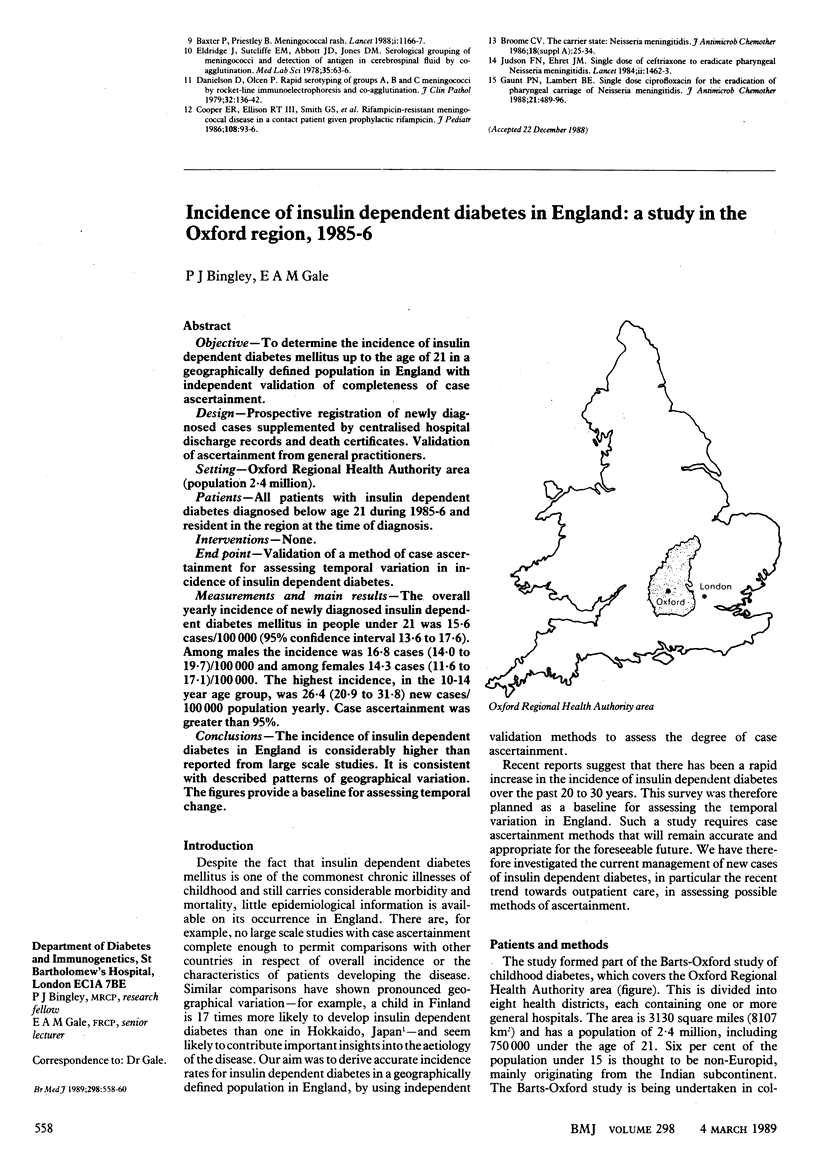Abstract
To determine the incidence of secondary meningococcal infection in close family and household contacts of index patients and to review the efficacy of chemoprophylaxis the records of 3256 cases occurring from 1984 through 1987 were examined. Seventeen secondary cases (0.5%) of infection were identified among these groups. The median interval between index and secondary cases was seven weeks. Fourteen secondary cases occurred more than one week after the disease was diagnosed in the index case. Three secondary cases had not received chemoprophylaxis and in another case the infecting strain had acquired resistance to rifampicin. Prophylaxis for the close contacts of 10 out of 11 of the remaining index patients failed to fulfil all the criteria of an optimal regimen. Even after optimal chemoprophylaxis the medical practitioner and the family should be aware of the increased and prolonged risk of secondary meningococcal infection among close contacts of patients with the disease.
Full text
PDF



Selected References
These references are in PubMed. This may not be the complete list of references from this article.
- Baxter P., Priestley B. Meningococcal rash. Lancet. 1988 May 21;1(8595):1166–1167. doi: 10.1016/s0140-6736(88)91981-2. [DOI] [PubMed] [Google Scholar]
- Broome C. V. The carrier state: Neisseria meningitidis. J Antimicrob Chemother. 1986 Jul;18 (Suppl A):25–34. doi: 10.1093/jac/18.supplement_a.25. [DOI] [PubMed] [Google Scholar]
- Danielsson D., Olcén P. Rapid serotyping of groups A, B, and C meningococci by rocket-line immunoelectrophoresis and co-agglutination. J Clin Pathol. 1979 Feb;32(2):136–142. doi: 10.1136/jcp.32.2.136. [DOI] [PMC free article] [PubMed] [Google Scholar]
- De Wals P., Hertoghe L., Borlée-Grimée I., De Maeyer-Cleempoel S., Reginster-Haneuse G., Dachy A., Bouckaert A., Lechat M. F. Meningococcal disease in Belgium. Secondary attack rate among household, day-care nursery and pre-elementary school contacts. J Infect. 1981 Mar;3(1 Suppl):53–61. doi: 10.1016/s0163-4453(81)80009-6. [DOI] [PubMed] [Google Scholar]
- Eldridge J., Sutcliffe E. M., Abbott J. D., Jones D. M. Serological grouping of meningococci and detection of antigen in cerebrospinal fluid by coagglutination. Med Lab Sci. 1978 Jan;35(1):63–66. [PubMed] [Google Scholar]
- Gaunt P. N., Lambert B. E. Single dose ciprofloxacin for the eradication of pharyngeal carriage of Neisseria meningitidis. J Antimicrob Chemother. 1988 Apr;21(4):489–496. doi: 10.1093/jac/21.4.489. [DOI] [PubMed] [Google Scholar]
- Judson F. N., Ehret J. M. Single-dose ceftriaxone to eradicate pharyngeal Neisseria meningitidis. Lancet. 1984 Dec 22;2(8417-8418):1462–1463. doi: 10.1016/s0140-6736(84)91647-7. [DOI] [PubMed] [Google Scholar]
- Munford R. S., Taunay A. de E., de Morais J. S., Fraser D. W., Feldman R. A. Spread of meningococcal infection within households. Lancet. 1974 Jun 22;1(7869):1275–1278. doi: 10.1016/s0140-6736(74)90022-1. [DOI] [PubMed] [Google Scholar]
- Stuart J. M., Cartwright K. A., Jones D. M., Noah N. D., Wall R. J., Blackwell C. C., Jephcott A. E., Ferguson I. R. An outbreak of meningococcal disease in Stonehouse: planning and execution of a large-scale survey. Epidemiol Infect. 1987 Dec;99(3):579–589. doi: 10.1017/s0950268800066437. [DOI] [PMC free article] [PubMed] [Google Scholar]
- Wall R. A. The chemoprophylaxis of meningococcal infection. J Antimicrob Chemother. 1988 Jun;21(6):698–700. doi: 10.1093/jac/21.6.698. [DOI] [PubMed] [Google Scholar]


